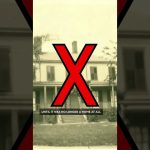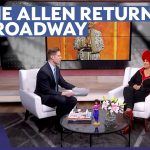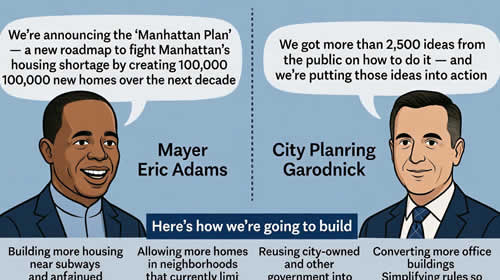Moderator: Good afternoon everyone, and thank you for joining us for today’s Public Safety Briefing, led by Chief of Operations from the New York City Office of Public Safety, Justin Meyers. Following our last speaker, we will take a few questions from the media followed by some questions that have been submitted by the public ahead of today’s briefing. I would now like to turn it over to Chief Meyers.
Justin Meyers, Chief of Operations, Office of Public Safety: Welcome and thank you for joining us for this week’s public safety briefing. Every Friday, we hold these discussions so that New Yorkers can hear from various different folks within the public safety team here in the City of New York about what we’re working on and what Mayor Eric Adams is working on to better protect this city on every single type of front that you can think of. So sometimes, we talk with law enforcement, sometimes we talk with the fire department. Today, we have some really great guests to join us for the briefing to talk about some different subjects that we haven’t touched on yet. So today, we’ve got Department of Health and Mental Hygiene Executive Deputy Commissioner of the Division of Mental Hygiene Deepa Avula. Next week marks Overdose Awareness Week in the US, which culminates in International Overdose Awareness Day on August 31st. Unfortunately, our country is in the grips of an opioid overdose crisis, and New York has certainly not been spared.
So Commissioner Avula, as well as Harm Reduction Training Coordinator, Herbert Quinones, are here today to give us some insight into the issue of overdoses, including what is causing them, and most importantly, what we can do if we’re ever in a situation where someone is suffering from an overdose.
Many of you have heard of the overdose reversal drug called naloxone or Narcan, and we are going to give an actual demonstration today so that you can see exactly what that looks like and how you might be able to save someone’s life. I’m also joined here today by the executive director of the Mayor’s Office for the Prevention of Hate Crimes, Director Hassan Naveed. Under Hassan’s leadership, and of course under the leadership of Mayor Adams, the Office for the Prevention of Hate Crimes has been taking a really creative approach towards reducing our implicit bias and fostering strong relationships in our communities. They’re doing that through a program called Breaking Bread, Building Bonds, which is something that everyone watching can and should get involved in. We can only tackle the issue facing our city when we work together, and this is a program that brings different perspectives to the table to do just that. So in just a few moments, Hassan will tell us about how that program works and how you can sign up to be a part of it.
So as I mentioned, first we’re going to start off talking as we lead into National Overdose Awareness Week next week. It’s a time to remember the lives that have been lost to the drug overdose epidemic that is occurring across this country. It’s a time to fight against the stigmas that still exist around substance use disorders, and it’s a time to strengthen all of our efforts to prevent overdose deaths however we can. I think as a community, we’ve evolved a lot over the years to really understand substance use disorder and recognize that it really can strike anyone and any community at any time.
I know a lot of folks watching are probably thinking, “Oh, well, I don’t use drugs,” or, “I never would do that. I wouldn’t be engaged in that,” but the reality is that opioid overdose-related deaths has now become the leading cause of death in this country for people age 18 to 49 years old. That is a spectacular statistic. And if you think about what that really means is it means that this is an epidemic that is impacting every single community across this country. Absolutely no one is immune to this epidemic. In 2000, we had 20,000 overdose deaths in this country. In 2010, we had 21,000. Last year, we had 105,000 overdose deaths in this country, and 88 percent of them are believed to be linked to synthetic opioids like fentanyl. So, this is a very serious issue.
I can tell you personally, I have multiple family members — and I’m someone who works in public safety, someone who works on these issues on a daily basis — I have multiple family members who became addicted to opioids through prescription drugs following surgeries or other medical events. They had a legitimate prescription from a doctor, when that prescription expired, they had grown an addiction to that drug and they went out and sought to purchase it themselves. They struggled with that addiction for many years and were able to break it. I personally did not know the entire time that that family member of mine was suffering from that. So we’re really here to bring awareness to this issue because it can happen to anyone in any community, and it’s important to recognize the signs of it, and be prepared to help folks in need in the event you need to step in.
Powdered fentanyl is often added to other drugs like heroin, cocaine, or even we’re seeing Adderall and other prescription drugs or things that look like prescription drugs ending up with fentanyl in it. And the reason why is because fentanyl is much more powerful than these other drugs, and it’s also very cheap to get your hands on it. So, what drug traffickers do is they purchase the synthetic opioid fentanyl, they mix it together with whatever else they might think the market is going to purchase from them, and then they put it out to market. And consumers can sometimes be… And of course, this is the illegal illicit drug market, of course, not a pharmacy or prescription drugs, but the illegal illicit market, even when you’re buying something that looks like a prescription drug can now sometimes have fentanyl in it, and it takes less than the amount of fentanyl that you can fit on a pinprick: literally that little fentanyl can kill a human being.
So even in small doses, it can be deadly, and even in circumstances where you don’t recognize that you’re taking fentanyl, it is possible if you’ve bought those drugs in the illicit market that it’s possible that you could be consuming fentanyl. So in a few moments, we will have an actual demonstration on how to administer the lifesaving overdose reversal drug naloxone, also known as Narcan, as well as information on where you can obtain it here in New York City. Commissioner Avula will also be providing some information to help us understand the gravity of the opioid and fentanyl crisis right here in the city of New York, and give us some insights into the department’s efforts to address this issue head on, including resources available for those seeking help. So whether you are someone who either uses drugs yourself, you have a friend or loved one who uses drugs, or you’re simply a concerned citizen, parent, grandparent, or someone who just wants to be prepared in the event that you witness a drug overdose at some point, we’re here to bring this discussion to you today. It’s about raising awareness, understanding the problem, and most importantly, learning how we can all be a part of the solution. So I’d like to turn it over to Commissioner Avula so you can share a little bit more about the work that the Department of Health and Mental Hygiene is doing here in the City of New York to combat the Fentanyl crisis.
Executive Deputy Commissioner Deepa Avula, Department of Health and Mental Hygiene: Great. Thank you so much, Chief Meyers. As the chief mentioned, opioids are a significant issue in our city and across the country. We recognize that too many lives are being lost to opioid overdose deaths. In 2021, 2,668 New Yorkers lost their lives to opioids. In the preliminary data for 2022, we have half a year of data, and that suggests we’re going to tragically surpass the milestone in 2021. What we know is the time to act is now. The Health Department has taken this very seriously. We have prioritized addressing the opioid overdose crisis across our city. The good news is that there are effective and evidence-based treatments available for individuals with substance use disorder, in particular opioid use disorder. There are treatments that are life-saving treatments for individuals who may be struggling with opioid addiction today and wish to stop their use. There are millions of people across the country who have successfully stopped opioid use with the help of medications such as methadone and buprenorphine.
The other good news, when we talk about opioids in the context of public safety, and we talk about our community and what our community members can do, as the chief mentioned, no one is immune to this crisis. It’s among all of us, our families, our friends, our neighbors, our coworkers, people we see every day. And again, because of the stigma, people may be afraid to talk about that. And one of the things we’re also doing at the health department is making sure that we’re breaking down those barriers. We’re making this something that people are not afraid to talk about because again, the good news on this is there is a life-saving drug out there that the chief also referenced, known as Naloxone. Naloxone is used to reverse the effects of an opioid overdose. And I think what we want to do is today is really make sure that all New Yorkers understand how very easy it is to actually administer Naloxone.
I know it could sound a little bit scary thinking about intervening at the point of an overdose and what that might look like, but we want to make sure just as New Yorkers and other people across the country have taken CPR training or have taken other training to intervene in a moment where you’re experiencing a potential public health or public safety crisis of a loved one or of a stranger even. We want to make sure that New Yorkers across the city understand that Naloxone is one, easy to get. You can get it from the Health Department at no cost to you, and it’s also very easy to use. And again, we want every New Yorker to feel safe and comfortable if they have to be in a situation where Naloxone has to be used. So what I’d like to do right now is I would like to demonstrate how easy it is for Naloxone to be used.
So my colleague, the Harm Reduction Treatment Coordinator Herbert Quinones is going to join me in demonstrating the use of Naloxone. Again, as I mentioned, Naloxone kits are available from the Health Department free of charge. In that kit, you will see a Naloxone packet. So essentially the first thing you need to do is recognize the signs of an overdose and how do you recognize those signs? What do you look for? So when you see an individual who is unconscious, who is unresponsive, who maybe has a change in color of their lips or their fingers, who has shallow breathing, potentially having gurgling sounds or snoring, that individual may be experiencing an overdose. So what’s the first thing that you should do? The first thing that you should do is see if you can get the person to respond. One way to do that we advise is that you shout loudly.
If the person still does not respond, now you know this person is unresponsive and it is time to call for help. So this again, should be treated as an emergency. You should call 911 and immediately notify the dispatcher of your location and notify the dispatcher that you are experiencing a person who is not breathing and who is unresponsive. Now it’s time to administer the Naloxone. So what you’re going to do is you’re going to take out the Naloxone, the medication, you’re going to peel the back of the packet. You’re going to remove the Naloxone from it. You’re going to take two fingers, your pointer finger and your middle finger. You’re going to place your fingers on either side of the nozzle. You will then insert the nozzle into the nostril of the person who is experiencing overdose, and you will press down. You press down only once. It will administer the full dose.
So one thing that’s very important here, do not test the medication. The plunger should only be pressed when you are ready to dispense the medication. Again, do not test the medication. Once you do that, you wait two minutes. If the person is still unresponsive, you can give a second dose in the other nostril. As you are waiting for the person to respond, you should also begin rescue breaths. So if you were trained in CPR, you can begin to administer CPR. If you’re not quite sure how to do CPR, we have a face shield in the Naloxone kit. You’re going to place that face shield on the person’s mouth. You’re going to pinch the nose of the person and breathe slowly into the mouth of the person. You’re going to do this twice, and then you’re going to repeat those rescue breaths, a single breath every five seconds.
While you are neither administering Naloxone nor doing rescue breaths, you should place the person on their side to avoid choking. So again, these sound like very simple steps and they sound like very simple steps because they are very simple steps. So we want everyone to be comfortable and confident in the administration of Naloxone should you run into an emergency situation. We also want you to know there’s more help available. Again, via the Department of Health and Mental Hygiene, we offer virtual trainings. We offer free Naloxone kits. We want to, again, make sure all New Yorkers are comfortable in the administration of a Naloxone.
One of the things that’s also important, once the Naloxone is fully administered, Naloxone takes about 30 to 90 minutes to go away from a person’s system. So the person, if they are successful, if the overdose is successfully reversed, they may appear agitated. They may appear angry. This is okay. This is something that comes with the administration of Naloxone, because the person might be experiencing withdrawal symptoms. You want to calmly explain to the person that they experienced an overdose. You want to really work with the person to see if you can get them to seek medical attention after this overdose. If they’re unwilling to seek medical attention, that’s also okay, but please do not leave the person alone. Please stay with them. We want to make sure that, again, individuals are brought to a point of full safety before they’re left alone. Essentially, the message here is that Naloxone saves lives. Every one of us can be trained on how to use it. And there is really no reason that in 2023, anyone has to die of an opioid overdose. We have this extremely effective life-saving medication that is available to us, all of us, at any time. So I very much encourage you to get your Naloxone kit, take additional training, and really again, seek us out. We’re here to help. We will do anything we can to make sure that Naloxone is distributed far and wide across the city, in all communities. We have opioid overdose prevention programs that are equipped with Naloxone. We make sure that they are distributed again as widely as possible. Once again, Naloxone is one of the major strategies that we use at the health department. We really take a comprehensive approach to addressing the opioid crisis. Again, we want to see a day when nobody dies of an opioid overdose. Thank you.
Meyers: Thank you so much, commissioner. What critically important information you both shared with us today. Thank you so much for being here. Can I just ask you, if I’m a parent or a loved one and I have a concern that my child or someone else in my family or in my circle might be using opioids, what are the first steps that I should take to try to prepare or protect that person from an overdose? What can I do?
Executive Deputy Commissioner Avula: Sure. So a couple of things. One of the things that we really encourage people to do, particularly parents of young people, talk to your kids, ask them, give them a safe place to be able to share what it is they’re experiencing, whether it’s opioid use, whether it’s potential risk for substance use, whether it’s friends who might be using, really educate children and others on the risks of opioid use, but also alert friends, family, colleagues, that there’s help available. That there, again, as I mentioned, there are medications that are available that treat opioid use disorder. They are very successful therapies to treat opioid use disorder. And again, if you do suspect that you are around someone who might encounter an overdose at some point, ensure that you’re equipped with Naloxone.
The other thing that I want anybody who might be using currently to understand is that you are not alone in that use, and please don’t use alone. Really the message that we want to share today is if you’re considering using, we ask you to think about that and consider not using. But if you are going to use, do not use alone. We know that the vast majority of overdose deaths actually occur because people are using substances by themselves. So there is nobody there to administer Naloxone. There is nobody there to call for help. So again, if you are going to use, don’t use alone.
Meyers: And if I wanted to try to get my hands on Naloxone, would I go to a website, call 311? What’s the best way to do that?
Executive Deputy Commissioner Avula: Sure. You can go to the health department’s website, so health.nyc.gov/naloxone.
Meyers: Great. And we offer that for free?
Executive Deputy Commissioner Avula: It is for free, yes.
Meyers: Excellent. Excellent. So we really encourage folks who may know someone or people who just want to be prepared in the event that a loved one does have an accidental overdose to please go to that website. Tell us one more time what that was.
Executive Deputy Commissioner Avula: Health.nyc.gov/naloxone.
Meyers: Perfect, excellent. And you can get the help that you need there. So next, we are joined by Hassan Naveed, who is the executive director of the Mayor’s Office for the Prevention of Hate Crimes. Hassan’s here to tell us about a transformative program the city has been running this year called Breaking Bread, Building Bonds. This is a program that was started by Mayor Adams in January, 2020 when he was serving as the Brooklyn borough president. Now it’s been successfully running and gaining momentum across all five boroughs where it’s helping to shape communities, promote understanding, and enhance safety.
The idea is both impactful and relatively simple. Bring together 10 people from different backgrounds, ethnicities, religions, and experiences, and have them share a conversation. This gives New Yorkers from all backgrounds an opportunity to talk to one another face-to-face. You do that, then you do it with 10 other people and 10 other people until you’ve reached 10,000 people, 10,000 people who may have replaced a preconception with a shared experience, who have forged new bridges of understanding, who walked away with a strengthened sense of trust in their community.
New York City is one of the most culturally diverse cities in the world. Our population represents over 150 countries right here in this city. We speak over 800 different languages. Nearly 40 percent of our population, I think it’s 37 percent of our population, was born in another country before they came to New York. And as many as 49 percent of New Yorkers speak a language other than English at home. So we are a diverse community. We have so many different backgrounds and places that we come from, and this is an opportunity for all of us to engage in that diversity, understand and learn from it, and really appreciate the incredible place that New York City is.
So our global diversity is why Mayor Adams is so focused on inclusivity and bringing folks together and in building these conversations. The Mayor meets with foreign governments and foreign countries that are represented here in this city on a regular basis because New York City represents the world. Our population is of the world. And so earlier this week, mayor Adams traveled to Israel to strengthen partnerships and visit historic sites and get a close up look at new technologies and approaches that Israel is taking to build safer and more sustainable cities, and make determination as to whether or not we should bring some of those technologies here to the New York City.
New York City is home to the largest Jewish population anywhere outside of Israel, and it’s important that Mayor Adams and other members of the city government make these trips and they serve as a moment for us to unite and strengthen our bond between other countries and other backgrounds and diverse populations that live here in the city of New York.
So having a strong sense of community, a network of support, and a mutual respect for your neighbors are all at the heart of public safety. So we need to be a part of the same team in order to address our common concerns, and that’s what Breaking Bread and Building Bonds achieves. So I’d like to turn it over now to Hassan to tell us exactly how this program works. And best of all, let us know how to sign up to either host or participate in one of these gatherings.
Hassan Naveed, Executive Director, Mayor’s Office for the Prevention of Hate Crimes: Thank you so much, Chief Myers. And yes, this is an unprecedented approach that’s unique to this administration. Mayor Adams has been really involved in the flag raisings of many different nations at Battery, what is it? Battery Park, that area. But it really goes to show that we’re acknowledging and recognizing the immense diversity here. And in doing that, this program, Breaking Bread, Building Bonds, really seeks to break down those silos among New Yorkers. It seeks to strengthen communities. And as Chief Myers said, there is a relation to public safety here. We know our neighbors, we know the folks that we see day to day. We can be able to strengthen our own public safety within our communities as well. And so Breaking Bread, Building Bonds, as we’re looking at some of these pictures here, you can just see that New Yorkers from all different backgrounds, just across the city itself have come together to be able to have those conversations.
What does it look like? What are those questions, right? So yes, there are small group discussions that really seek to ask questions. One question that really sort of… I’ve facilitated a few of these Breaking Bread, Building Bonds gatherings, and one question that really comes up is, when is the time that you felt uncomfortable, and why? I think it’s something that we can all share and resonate, right? It resonates with all of us, despite who we are or where we’re from. But really showing that no matter, wherever you come from, who you love, there’s a lot more that really brings us collectively together. And so those conversations have been really critical, these small group discussions, and really building that understanding between New Yorkers itself. And so as you’re looking at some of these pictures, you’ll see that folks are holding up the logo of the program itself, Breaking Bread, Building Bonds.
And what’s happened, as we’ve noticed the course of many of these gatherings, is that these people that are sitting with folks they’ve never sat with before. They’re engaging with neighbors that they live with on the streets for quite a while, but they haven’t had the opportunity to be able to really say anything more than hi and hello. And so to be able to have a conversation with someone who lives on the same street as you after many years, and being able to build a relationship, understand where they’re coming from, also learn from each other, itself really seeks to end up strengthening our community’s needs collectively. And so this program has happened in various places, but I do want to bring up a particular example of this program. We did this in the high schools in Brooklyn not too long ago. And you can just imagine 150 students collectively coming together in an assembly, splitting up into small groups, really leaving their social bubbles, right? We all kind of have our cool social bubbles and high school and such, but talking to someone new, learning from them, engaging with them.
And so it was powerful because there’s no opportunities that you have like that in government to be able to build those one-on-one relationships. And that’s what’s very unique about this administration, but that’s also very unique about Mayor Adams as well. He strongly believes, as I do, that we need to be able to meet people one-on-one and have those direct conversations. This is a citywide initiative. And as they’re working toward the citywide initiative, you’re going to be seeing it coming from various parts of the city, whether it’s in the schools, NYPD or many other partners across the city are engaging this in proactively.
But you can also play a role as well. Do you want to host, or do you want to participate in one of these gatherings itself and do something like break bread and build a bond? Well, you can do that just by going to nyc.gov/breakingbread and sign up right there. And that’ll get you into the entry point of us connecting you to a much larger network that continues to grow, that brings New Yorkers together on basically building community.
Meyers: It’s fantastic. Thank you so much, Hassan, for joining us and sharing with New Yorkers a little bit about what we’re doing to help bring our communities together. We have such diverse communities here in the city of New York, and that’s what makes this city so amazing, right?
Naveed: Absolutely.
Meyers: It’s what builds the culture, the restaurants, the art scene. It’s what makes us, I think, a little bit different, a little bit better than a lot of other places because you get different perspectives and understanding on how folks from all different walks of life and all over the world live. And in doing that, you enrich yourself. You grow personally. So these are such important, important ways to participate and be a productive member of our community. I know we have a number of questions. I don’t know if we have any members of the media, but I know we have some questions from the community about this program. And so I think we’re probably ready to go to the question portion of the program.
Moderator: Thank you. Earlier this week, the administration reached out to New Yorkers asking them to submit questions for the officials that have joined us here today. We will now get to as many of those as we can with the amount of time that we have left. Our first question comes from Steve in Queens for Director Naveed, who asks, “Sometimes I see graffiti in my neighborhood that’s hateful, but it’s not on a home or business or place of worship, just street polls, et cetera. Should I still report that to the NYPD or 311?”
Naveed: First and foremost, hate in itself is something that we do not tolerate here in New York City. And if you see something that is hateful, especially when it comes to the question related to vandalism, for example, on certain things, it’s so important to be able to call 311 or call 911 in those instances. And I would always stick with 911 in cases of an emergency itself, right? If you see something that’s going on, a situation is escalating into a particular call 911 itself. 311 is also a number to call to be able to report some of those issues of vandalism. It all goes back to the NYPD. And those cases, and those incidents are being tracked. Thank you.
Moderator: Thank you. Next question comes from Greg in the Bronx for the Department of Health, who asks, “Does Narcan become less effective over time after previous uses?”
Executive Deputy Commissioner Avula: Thank you for that question. It’s a very good question, and the answer, thankfully, is that no, it does not become less effective. You can administer Narcan multiple times if a person has experienced multiple overdoses, and it will still be as effective.
Moderator: Next question comes from Lily in the Bronx for Director Naveed, who asks, “How do I host a dinner? And can I host more than one?”
Naveed: Listen, this program is going to be successful if New Yorkers are involved, and we’ve seen the immense interest in just the first month of launching it. We had 600 folks asking to be host, as well as participants in this. And so yes, you can host. And yes, you can be a participant. And yes, we do provide the resources, as well as the information to be able to do it. So I would go to www.nyc.gov/breakingbread. There is a form at the bottom of the page. And you can fill that out and submit it, and we’ll be in touch with you.
Moderator: And our final question comes from Stacy in Queens for the Department of Health, who asks, “How do you detect when Narcan is necessary?” And I would add potentially if you stumble upon someone who is unconscious with no other context.
Executive Deputy Commissioner Avula: Yes. Thank you very much for that question. As I mentioned, there are a few things that you can look for to detect whether or not someone is experiencing an overdose. So what you’ll look for is if the person is unconscious or unresponsive, if they have slow or shallow or stopped breathing, if their fingers or lips are turning colors, or if they’re snoring or exhibiting sort of gurgling sounds. And one of the other things I would mention is Naloxone is safe to administer even if a person is not experiencing an overdose. So if you are not sure, and you’re worried that if you give Naloxone to someone who’s not having an overdose, you can harm them, it will not be harmful to give.
Moderator: Thank you very much, commissioner. On behalf of the Adams Administration, I would like to thank everyone for tuning into today’s briefing. We look forward to seeing you all at our next one. Have a great day.
August 25, 2023 Public Safety Chief of Operations Justin S. Meyers Holds Briefing on Public Safety in New York City Blue Room City Hall Lower Manhattan
Source: New York City Hall Mayor office news NYC.gov – Big New York news BigNY.com










